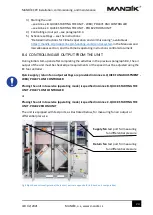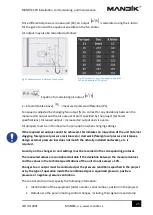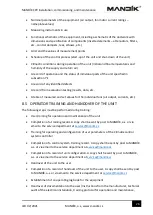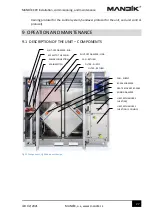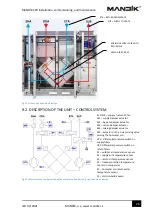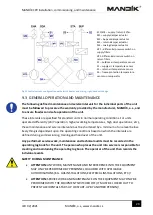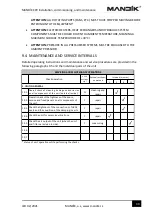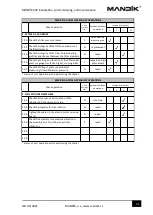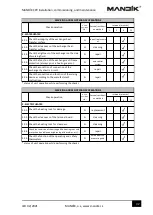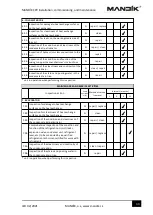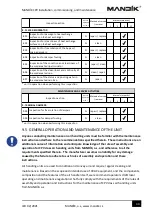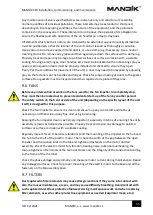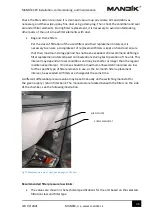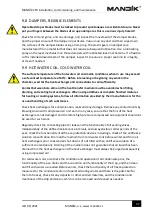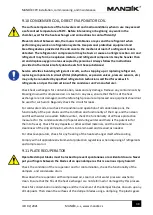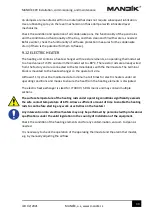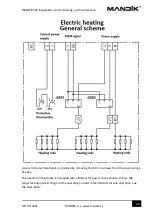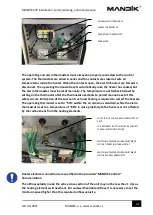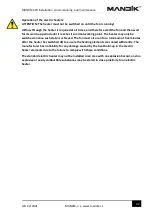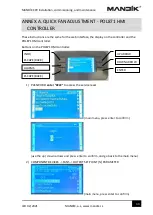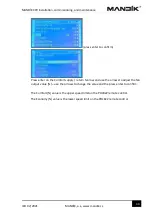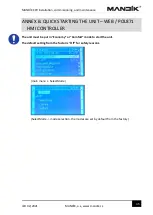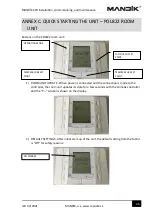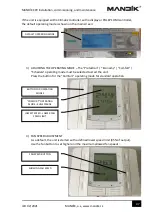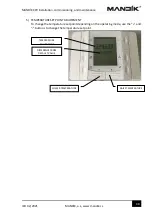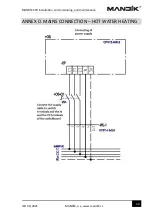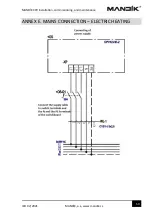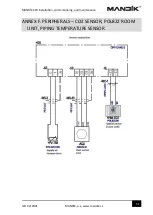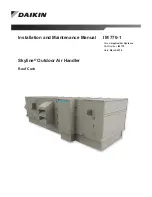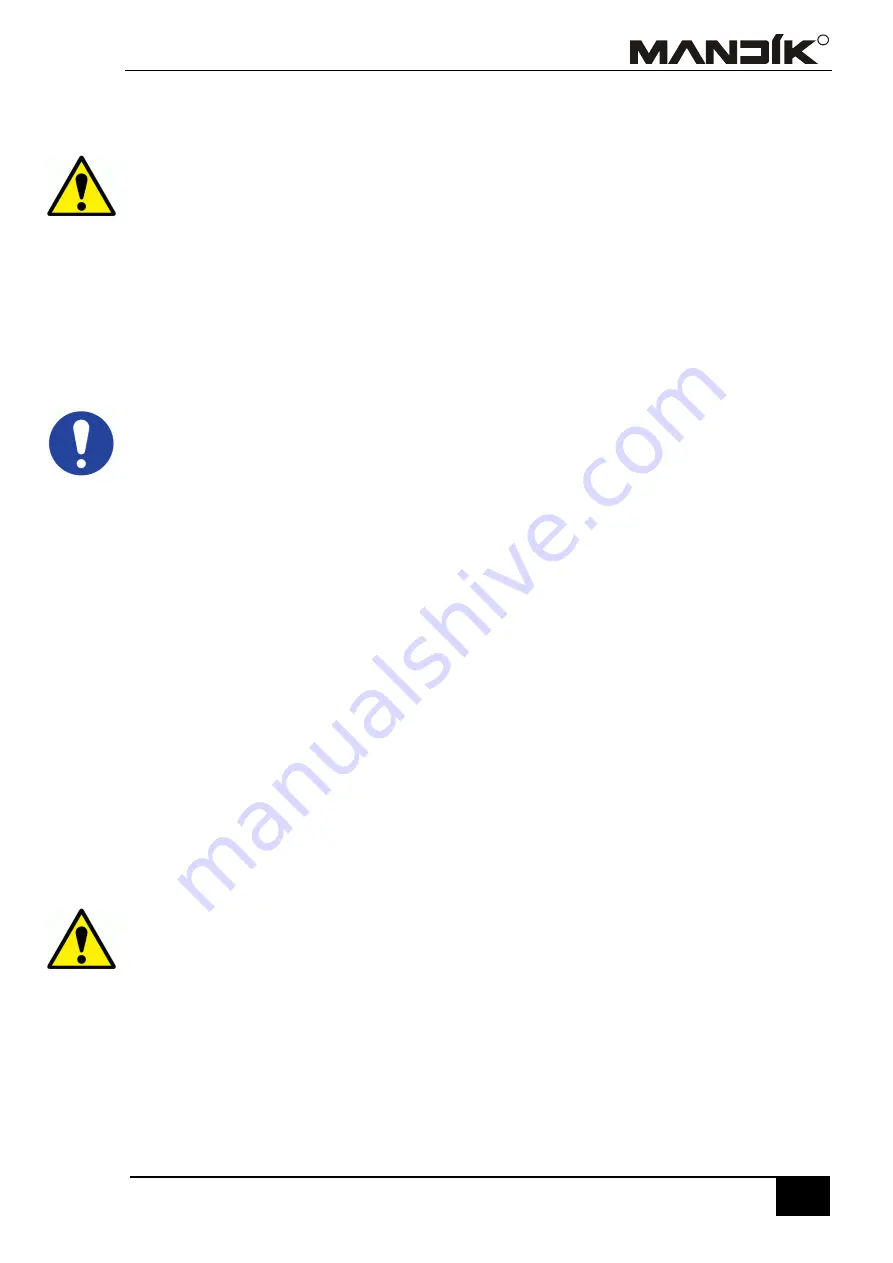
MANDÍK CPV Installation, commissioning, and maintenance
IZU 02/2021
MANDÍK, a.s., www.mandik.cz
R
38
9.10
CONDENSER COIL, DIRECT EVAPORATOR COIL
The surface temperature of the hot water coil and media conditions when in use may exceed
a safe contact temperature of 60°C. Before intervening or beginning any work in the
chamber, wait for the heat exchanger and connections to cool sufficiently!
Prevent contact between skin, the mucus membranes or eyes and the refrigerant when
performing any work on refrigeration systems. Use personal protective equipment and
breathing devices provided at the entrance to the mechanical room if a refrigerant leak is
detected. The refrigerant or compressor oil may be toxic or cause an allergic reaction. Air and
refrigerant may form an explosive mixture, and refrigerant components may be heavier than
air and displace oxygen in areas occupied by personnel. Always follow the instructions
provided in the material safety data sheets for these substances!
Service activities involving refrigerant circuits, such as topping up or replacing refrigerant,
replacing components in circuits (filter/dehydrators, expansion valves, pressure sensors, etc.)
may only be conducted by qualified refrigeration technicians certified for work with
refrigerants and per the instructions of the condenser unit’s manufacturer.
Check heat exchangers for contamination, leaks and any damage. Remove any contaminants by
blowing down with compressed air or steam. In any case, ensure that the fins of the heat
exchanger are not damaged. and therefore high-pressure compressed air equipment should not
be used for such work. Regularly check the circuit for leaks.
For cold water coils, also check the condition and operation of all condensate pans, the
functionality of the pan drains and the condition and functionality of the trap, and then clean
and fill with water as needed. Before winter, check the functionality of all freeze protection
measures for the condensate drain (if operated during winter and there is the potential for
them to freeze). Check for any deposits or other settled materials, and the condition and
cleanliness of the drip eliminator, which is to be removed and cleaned as needed.
For direct evaporators, check for any freezing of the heat exchanger itself while cooling.
Comply with all applicable environmental protection regulations when disposing of refrigerants
and compressor oil.
9.11
PLATE RECUPERATOR
Operable damper blades must be locked to prevent spontaneous or accidental closure. Never
put your fingers between the blades of an open damper as this is a serious injury hazard!
Check the condition of the recuperator and for contamination, check the functionality of the
dampers, and condensate drain.
Blow down the recuperator with compressed air, steam or a hot water pressure washer to
clean. Ensure that the fins of the heat exchanger are not deformed or damaged by this process.
Check for contamination and damage and the movement of the damper blades. Vacuum up any
dirt deposits. Then clean the surfaces of the damper blades using a damp rag. The plastic gears

